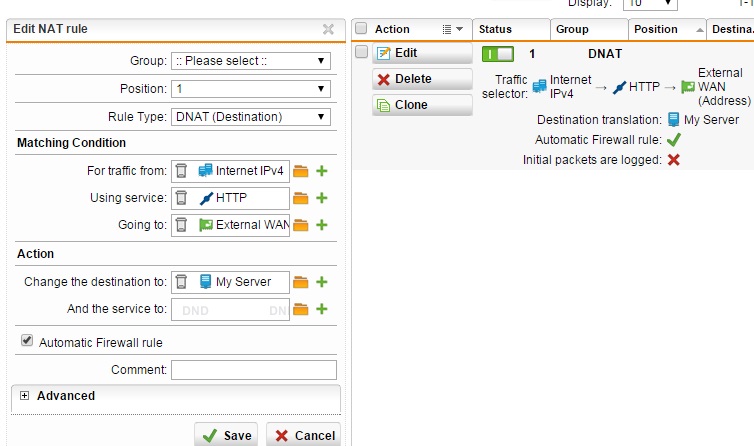Hi,
I would like to know how to create a forwarding rule, what I mean is we have some terminal servers in our domain now we want to publish them, I know how to publish them, but what I dont know is how to publish them on different port, let say our customer want to access a terminal server (10.010.10) that is behind the UTM with different default port, as you know the RDP port is 3389 but we want our user to access the T.S. server e.g. with port number 4002 (62.XX.XX.160:4002)
I dont want to change the port number of the RDP on the terminal server we want when user access the T.S. with 62.XX.XX.160:4002 then utm forward it to the T.S. server on port 10.0.10.10:3389
Thanks
This thread was automatically locked due to age.



